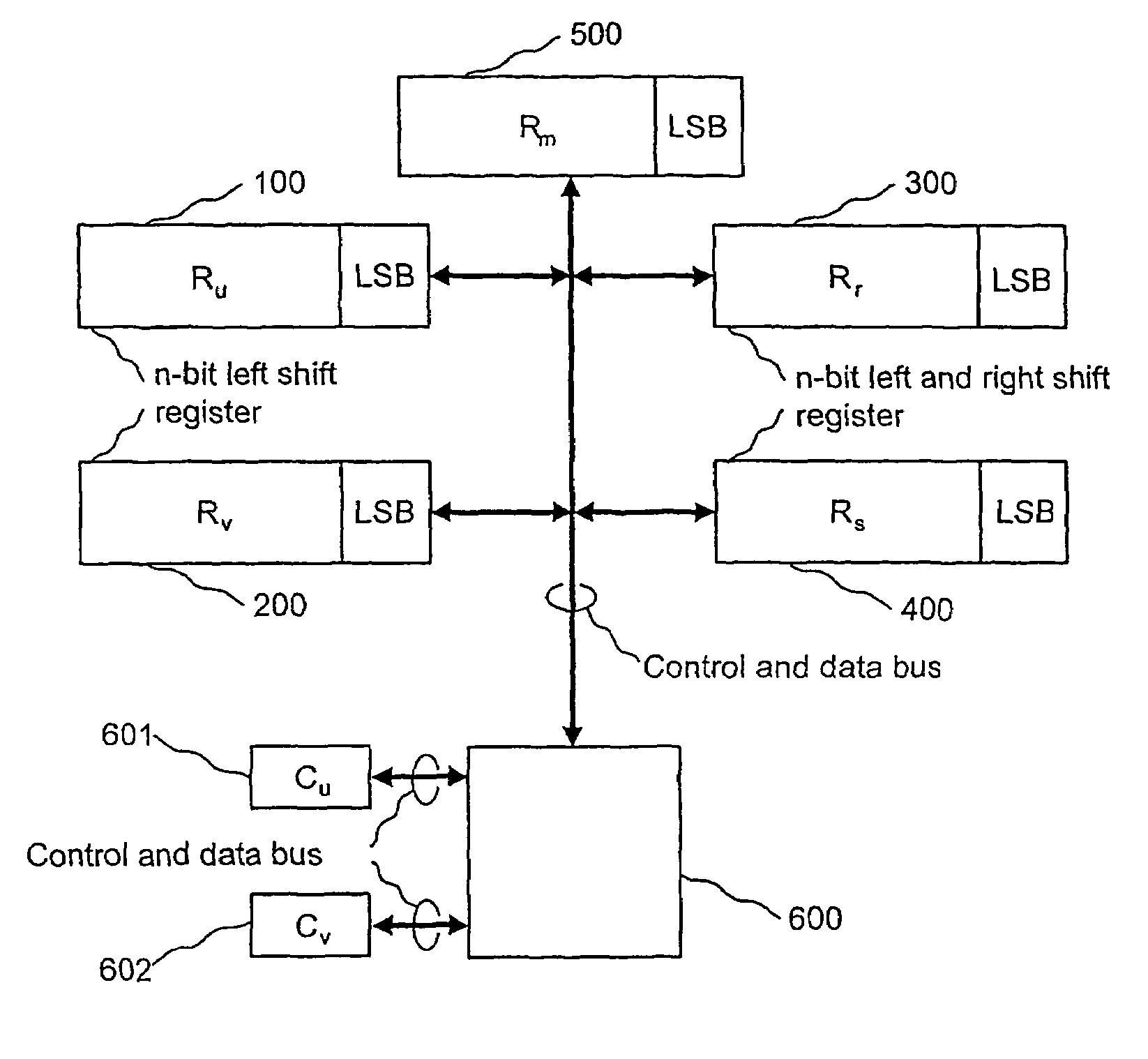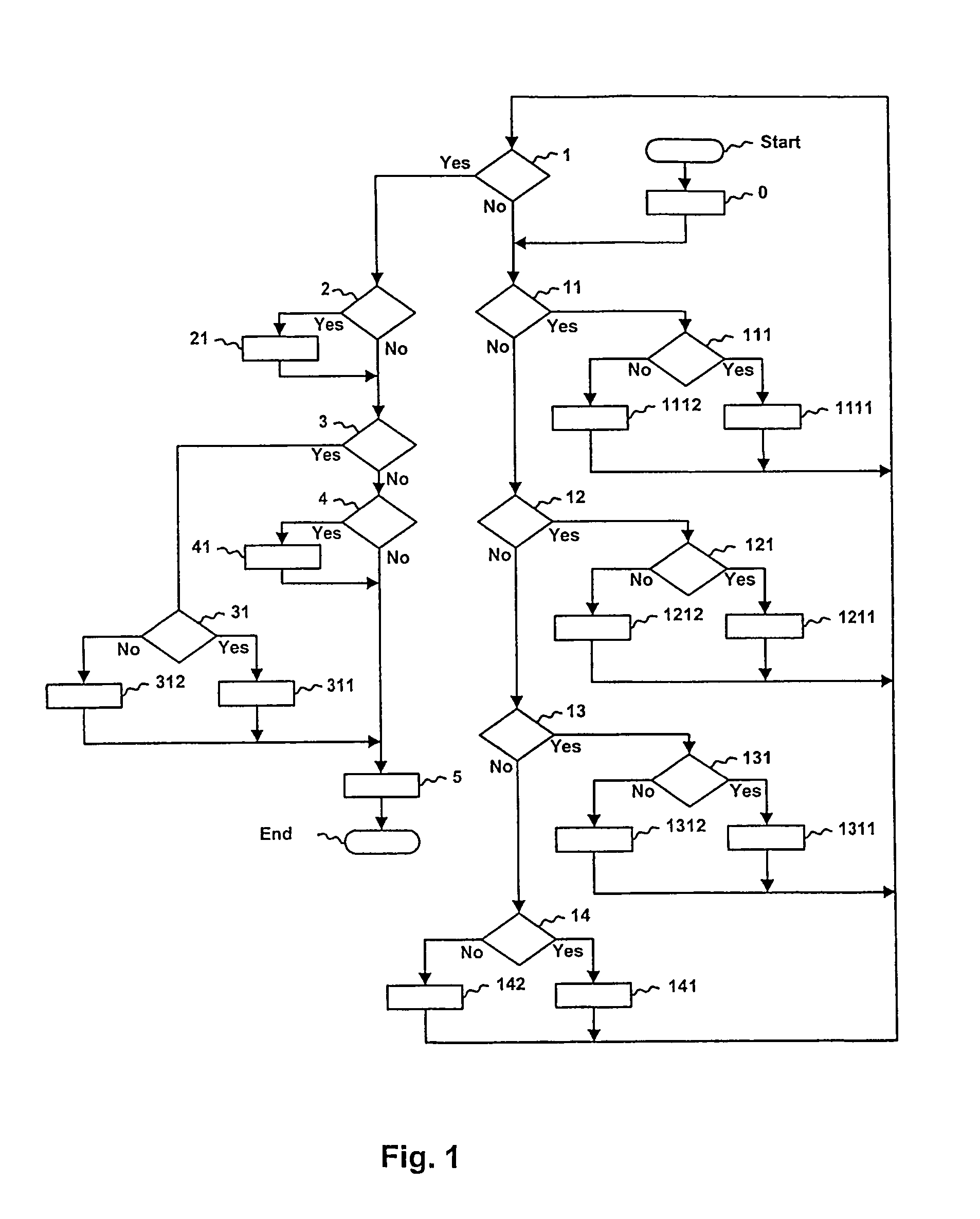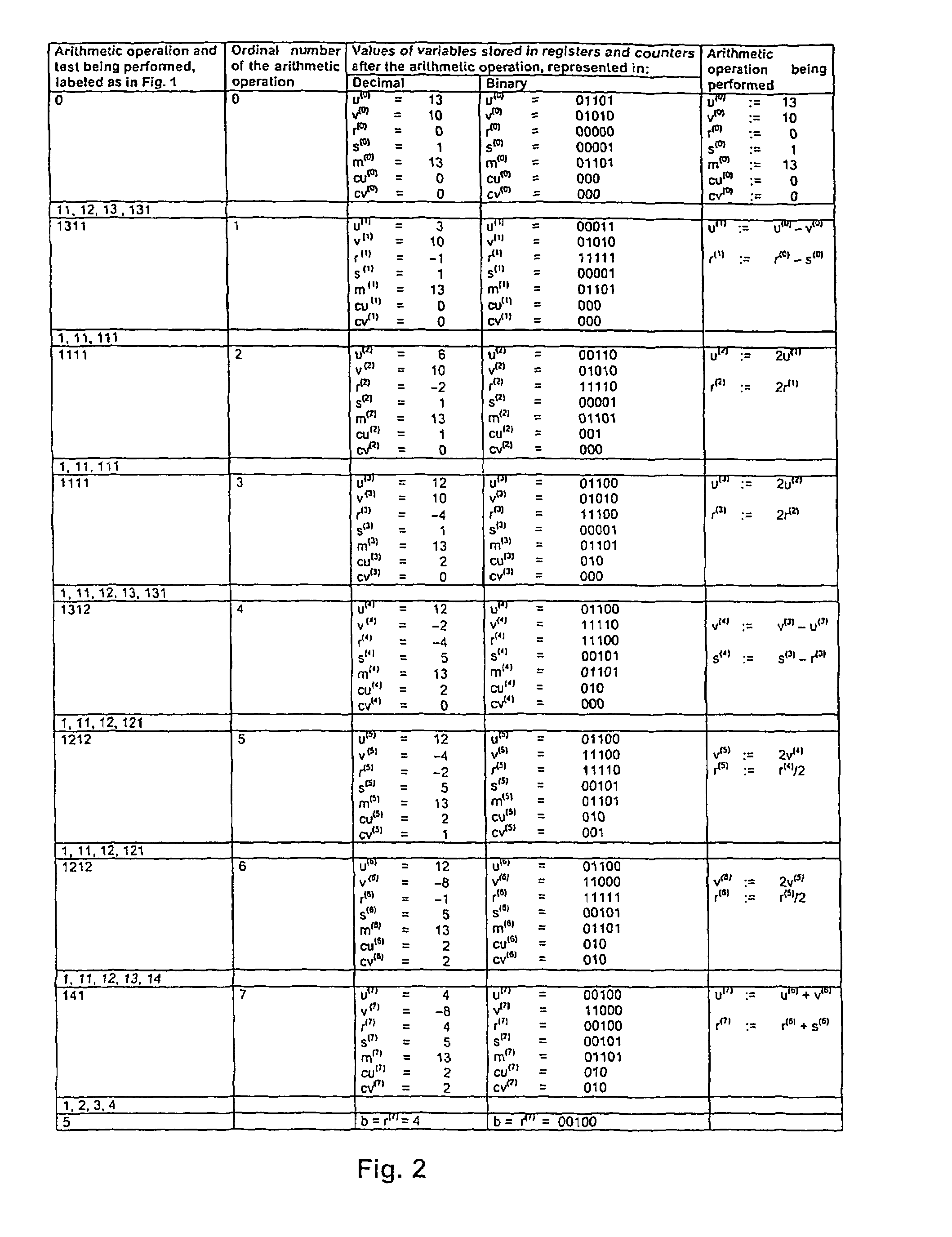Method for generating the multiplicative inverse in a finite field GF(p)
a multiplicative inverse and finite field technology, applied in the field of new, can solve the problems of redundancy of shift operations, large number of “greater/less than, subtraction operations, etc., and achieve the effect of eliminating conversion operations
- Summary
- Abstract
- Description
- Claims
- Application Information
AI Technical Summary
Benefits of technology
Problems solved by technology
Method used
Image
Examples
Embodiment Construction
[0026]The method of generating the multiplicative inverse in a finite field GF(p) according to the proposed invention will be described hereafter in the form of individual steps according to the flow diagram in FIG. 1. As a basis, it is assumed that a positive integer g greater than one and a prime p greater than g are given. Then, a multiplicative inverse of q exists, so that
b=q−1 mod p, and
it holds that
q.b≡1(mod p).
[0027]Let u, v, r, s, m be n-bit variables whose values in the two's complement code are contained in the first through fifth n-bit register Ru, Rv, Rr, Rv, Rm respectively, where, for the number of bits n, it holds that 2n−1>p. Furthermore, let Cu and Cv be the first and second e-bit counter respectively, where e=┌log2n┐, and their contents are represented by the values of the e-bit variables cu and cv. Generating of the multiplicative inverse b of the number q modulo p can be expressed by the following procedure. First, the states of the first through fifth register R...
PUM
 Login to View More
Login to View More Abstract
Description
Claims
Application Information
 Login to View More
Login to View More - R&D
- Intellectual Property
- Life Sciences
- Materials
- Tech Scout
- Unparalleled Data Quality
- Higher Quality Content
- 60% Fewer Hallucinations
Browse by: Latest US Patents, China's latest patents, Technical Efficacy Thesaurus, Application Domain, Technology Topic, Popular Technical Reports.
© 2025 PatSnap. All rights reserved.Legal|Privacy policy|Modern Slavery Act Transparency Statement|Sitemap|About US| Contact US: help@patsnap.com



